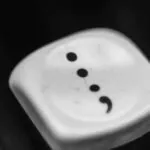
The Bad Big Wolf? A Proofreader’s Guide to Adjective Order
If the phrases “black little dress” and “red dry wine” sound strange in your head, you have intrinsic knowledge of English adjective order. When we use multiple adjectives to modify a noun or nouns, they don’t fall into a random sequence. Rather, they follow a pattern based on their function. In fact, most native English speakers don’t realize that adjectives have an order. To learn more about adjective order, check out our guide below.
Adjectives
Adjectives are words that describe a noun’s quality or state of being. They’re often called describing words because they provide information about a noun’s appearance, quantity, etc. In English, they’re always placed before the noun:
The old cat is asleep.
The funny men are laughing.
The big balloon is floating away.
You can string adjectives together to provide more information about the noun:
The ugly old cat is asleep.
The two funny men are laughing.
The big pink balloon is floating away.
Adjective Order
When we use more than one adjective to modify a noun, we don’t just put them in a random order. There’s a predictable pattern that adjectives must follow based on their type.
When you use multiple adjectives, you should almost always place them in this order:
- Quantity
- Quality
- Size
- Shape
- Age
- Colour
- Nationality
- Material
- Type or purpose
To describe a pair of old brown leather boots, you have the adjectives “brown,” “old,” and “leather.” Following the order of adjectives, the correct way to phrase this would be “old (age) brown (colour) leather (material) boots.”
This is why we say “Clifford the big red dog” or “big fat Greek wedding.” If you say “Clifford the red big dog” or “Greek fat big wedding,” it just sounds… wrong.
Using Adjectives from the Same Group
Punctuating multiple adjectives from different groups (i.e., size, colour, quality) is pretty straightforward – you don’t have to use any. For example, “old” and “brown” are from different adjective groups (age and colour), so they can be used without commas to modify a noun like this:
There is an old brown tree in the backyard.
However, when you use two adjectives from the same group (e.g., “smart” and “creative” are both qualities), place either a comma or the word “and” between the adjectives:
The smart, creative girl won the spelling bee.
The smart and creative girl won the spelling bee.
In the rare case that you use three or more adjectives from the same group, write the adjectives with commas between them, and add the word “and” before the last adjective:
I love this amazing, delicious and nutritious sandwich.
Exceptions to the Rule
Just like many grammar rules in the English language, there are exceptions to adjective order. Take the “big bad wolf” from the popular fairy tale Little Red Riding Hood. When recalling the villain from this story, you wouldn’t consider placing the quality (bad) before the size (big), even though this would be the correct sequence according to the adjective order.
Another example is from Bob Dylan’s song “Don’t Think Twice, It’s Alright.” In the song, Dylan sings, “I’m walking down that long lonesome road,” placing size before quality. It would sound strange if he had said “lonesome long road,” wouldn’t it?
Exceptions to adjective order aren’t common, and it’s unclear how or why they came into place. You can usually trust your gut with this – if the adjective order sounds right, it probably is.
Becoming A Proofreader
Adjective order is one of those English rules that you probably always knew but never realized you knew. We go into more detail about adjective order in our Becoming A Proofreader course, plus plenty more intricacies of the language to look out for while editing. If you’d like to learn the skills and procedures of professional proofreading, you can try the course for free.



Leave a Comment
Your email address will not be published.